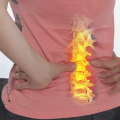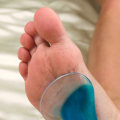Osteopathy, a form of manual therapy, is used in various contexts to treat a wide range of conditions by focusing on the body's musculoskeletal system. This holistic approach emphasizes the interrelationship between structure and function, and the body's ability to heal itself. Osteopaths use their hands to diagnose, treat, and prevent illness or injury through techniques that include stretching, massaging, and manipulating muscles and joints. Understanding when osteopathy is used involves exploring its applications in different health scenarios and its integration with other therapies. Osteopathy, a form of manual therapy, is used in various contexts to treat a wide range of conditions by focusing on the body's musculoskeletal system. This holistic approach emphasizes the interrelationship between structure and function, and the body's ability to heal itself. Osteopaths use their hands to diagnose, treat, and prevent illness or injury through techniques that include stretching, massaging, and manipulating muscles and joints. Understanding when osteopathy is used involves exploring its applications in different health scenarios and its integration with other therapies.
One of the primary uses of osteopathy is for treating musculoskeletal pain. This includes back pain, neck pain, and joint pain, which are common complaints among patients seeking osteopathic care. Osteopaths aim to improve mobility and reduce pain through manual adjustments that enhance the alignment and function of the musculoskeletal system. For instance, individuals suffering from chronic lower back pain may benefit from osteopathic techniques that relieve tension, improve posture, and enhance spinal mobility. These interventions can significantly reduce pain and improve quality of life.
Osteopathy is also frequently used for sports injuries. Athletes and physically active individuals often experience strains, sprains, and overuse injuries that affect their performance and recovery. Osteopathic treatment can help by promoting faster healing, reducing inflammation, and preventing future injuries. Techniques such as soft tissue manipulation and myofascial release are used to address muscle imbalances and improve flexibility, thereby enhancing overall athletic performance and resilience.
Another area where osteopathy is commonly applied is in managing headaches and migraines. Tension headaches, often caused by stress and poor posture, can be alleviated through osteopathic techniques that target the neck and upper back muscles. By improving blood flow and reducing muscle tension, osteopathy can help decrease the frequency and severity of headaches. Similarly, for migraines, osteopathic manipulation can address underlying musculoskeletal issues that may contribute to the condition, offering a non-pharmacological approach to pain management.
Osteopathy is also used in the treatment of digestive disorders. The musculoskeletal system's alignment can impact the function of internal organs, and osteopaths can use techniques to improve visceral mobility and function. Conditions such as irritable bowel syndrome (IBS) and constipation can be managed through osteopathic treatment that enhances the movement and alignment of the spine and abdomen, promoting better digestive health.
Additionally, osteopathy can play a role in respiratory conditions. Techniques that improve the mobility of the rib cage and diaphragm can enhance lung function and breathing efficiency. This is particularly beneficial for individuals with asthma or chronic obstructive pulmonary disease (COPD). By improving the mechanics of breathing, osteopathy can help reduce symptoms and improve overall respiratory health.
Pregnancy is another context where osteopathy is frequently used. Pregnant women often experience musculoskeletal discomfort due to the physical changes and additional weight associated with pregnancy. Osteopathic treatment can help alleviate back pain, pelvic pain, and other discomforts by improving posture, reducing muscle tension, and enhancing the body's ability to adapt to these changes. Postpartum, osteopathy can aid in the recovery process by addressing any residual musculoskeletal issues and promoting overall health and well-being.
In pediatric care, osteopathy is used to address conditions such as colic, feeding difficulties, and musculoskeletal issues in infants and children. Gentle osteopathic techniques can help improve the function of the body and promote healthy development. For example, cranial osteopathy, a specific branch of osteopathy, is often used to treat infants with head shape abnormalities or feeding issues, supporting their growth and development in a non-invasive manner.
Moreover, osteopathy can be integrated with other therapeutic approaches to provide comprehensive care. For instance, combining osteopathy with psychological support can address both the physical and emotional aspects of health. Services such as those offered by psicólogos Las Rozas can complement osteopathic treatment by helping patients manage stress, anxiety, and other psychological factors that may contribute to their physical symptoms. This integrative approach ensures that both the mind and body are considered in the treatment plan, leading to more effective and holistic care.







